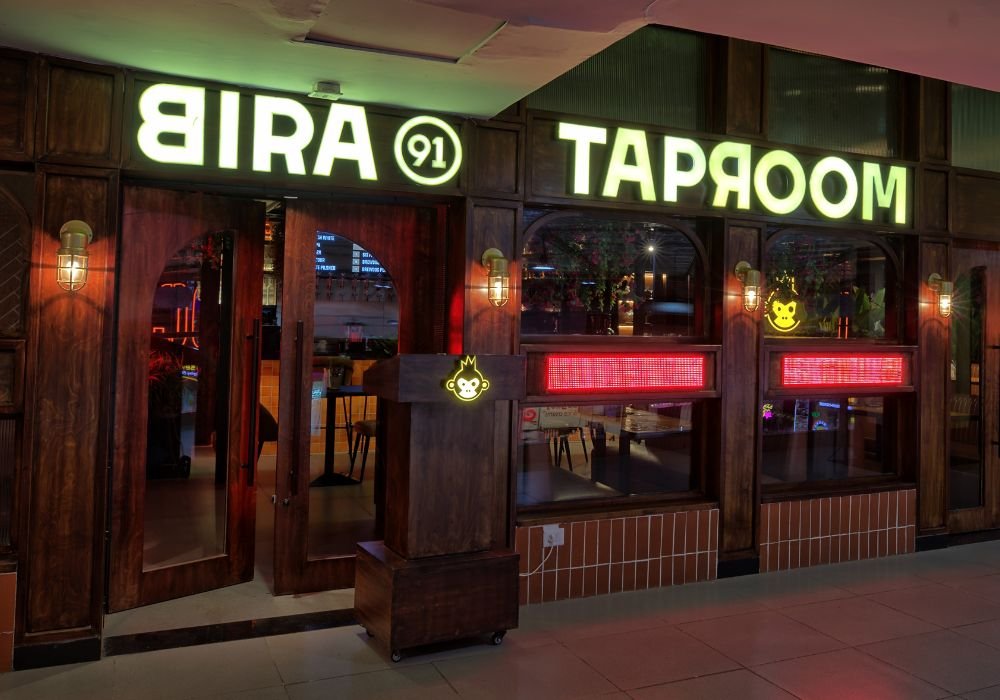Want to Open a Brewpub? Hic!!

INSIGHTS ON HOW TO OPEN A BREW PUB
Matthew Callanghan
CBAI President
Ever want to open a brewpub or brewery then here are a few general guidelines, I hope will help you understand about how it all works, for both brewpubs and production brewery start-ups.
Given that brewpubs seem to be the ‘flavour of the day’ here in India, that’s going to be my primary focus. And because of the nature of brewing, these guidelines are universally applicable, regardless of location you choose or even which country you’re in.
Of course, this isn’t meant to be the single source on how to start a brewery, but general information on the topic based on my own experience and observations over the last twenty years of my brewing career.
My sincere hope is that this article will help stimulate the thinking process amongst those looking to set up such an enterprise, and guide them in making better, more educated decisions.
SO LET US GET STARTED
I have lost count of the number of times someone has come up to me and said – “I want to open a brewpub!”, or brewery. And one of my first response to them is – “Alright. Why?”
And I usually follow that up by asking them about where their business plan is, how much they want to produce, whether they want to do tins, bottles, kegs or draught? More often than not, I am greeted with either a blank look, or one of complete discontentment.
To start, being a brewer or the owner of a brewery is really not just another job. That’s not the way I see it anyway.
For me, and most of us who have been doing this for a while, it is a passion for excellence that drives us. It’s pretty much what we eat, sleep, breathe and of course, drink. It’s a dynamic business that requires, literally 24/7 attention.
So if you are going into this field thinking “let’s just get started and see where it goes”, then you should probably seriously consider a different line of work or business altogether.
BUSINESS PLAN
One of the biggest obstacles for most people not succeeding in the modern brewing scene is a lack of planning and funding. Business plans are there for a reason. You should definitely have a thoroughly mapped out one before you think of starting anything at all. It is a space where you can put all your thoughts, ideas, information, research, and plans in an easily accessible format. This is also useful because you can easily check numbers and share this information with potential investors. Besides initial planning and start up, business plans should be reviewed periodically to see how your initial planning was compared to what you are actually doing and amended as needed.
This business plan process, coupled with research, can take anywhere from 3-6 months, or even longer, depending on resources, but it is time well spent. A good business plan should contain, among other things, details on exactly what you are planning on doing with regard to a brewpub or whether it’s going to be a brewery, or both.
Specify the location of your business: Reasons for choosing a particular location for your brewpub/brewery. Because location is important. Location, location, location!
REFERENCE CHECKS ON INVESTORS/EMPLOYEES
Who and how many people will you need, their talents, their backgrounds? Everything relevant should be documented and justified, because these are the people who will become representatives of your project.
FINANCES
This is of course the big one. List everything from the most minute details to the big expenses. Setup cost, opening and operational costs, and list it out in detail for the first 3-6 months of operations and then in a broader sense continue these numbers to the next three to five years as well.
FINANCIAL RESOURCES
Now that you have your finances and costing sorted, make a list of the people and institutions you plan on getting your funding from. Is it a self-funded project, friends, a bank, private investors, public companies or a combination of all of these? Who’s going to have controlling interest in the project?
Despite all the good research and planning, you’re bound to run into unexpected expenses. So make sure you plan for a contingency fund.
The last thing you need is a brewery fully set-up but no funds to open it.
PROJECTED INCOME
Do this based on projected sales, develop an idea of who your potential customers will be, what they might spend per visit, how many as well as the kind of demographic profile you want to operate in, so that you can keep your positioning and messaging relevant.
Equipment: There is always a new versus used equipment debate. Each one comes with their set of advantages and disadvantages.
Advantages with new equipment, there is lower maintenance and operating cost involved, newer technology might help save on operating costs, in areas like higher output with reduced energy usage.
The disadvantages with new equipment are much higher initial costs, along with the long lead time, design and of not choosing the right vendor for your project. Among other issues, if you decide on a 10hl brew house, choose a vendor that builds this size, not one who does mega breweries or on the other side, one who does Nano-breweries.
In the case of used equipment, you might end up saving money initially, but it might limit your capacity and the types of brews you can produce. There is also the maintenance, repairs and operating costs, which might be higher.
I’ve worked with both new and used equipment, and had both good and not-so-good experiences with both.
So, whichever one you decide to go for, make sure you choose a vendor who has a long reputable track record, with at least, say five years of experience building/selling brewing equipment and also check their references. It just makes sense.
SIZE OF EQUIPMENT
A rule of thumb is that if you’re considering anything under a 10hl brew house, you’re going to find it difficult to make a viable business out of it in the long run. Not saying it isn’t doable, but consider that your operating cost from a 3hl to a 10hl plant for example, doesn’t change much. This includes labour needed, maintenance and utilities cost. But your output is three times as much or more. And if your output is higher, the cost per pint drops drastically. A 10hl brew house can handle a 150 seat brewpub comfortably, if set up properly.
THE BUILDING
If you are renovating an existing building or if it is a greenfield project, make sure you hire people who have done this before, and as always, check their references.
Brewing equipment is very heavy and messy work. You need to look at the brewery as an indoor swimming pool.
It’s a lot of weight in a small area, which is wet most of the time. Due to this, you will require solid flooring and also the ability to wash down everything on a daily basis.
If you are not planning on setting up on a ground floor, get a structural engineer to check if the floors will handle the equipment. One 20hl tank (3 legs) could be 2000 kgs per square metre with each leg of the vessel carrying up to 800 kgs.
Drainage and effluents used will also be unique compared to other industries.
Brewing, like I have already discussed, is energy intensive. The equipment and usage of water, electricity, and gas will be higher.
As for the space, I’ve seen plans with brew houses and fermenters, where the CLT, HLT, boilers, raw ingredients, storage and electrical units have been forgotten.
In general, a basic 10hl brew pub, not including storage, could take up to 250 sq metres for the brewery. Add to that kegging or small packaging, and that requirement would increase drastically.
BREWER OR CONSULTANT OR BOTH
In my opinion, these people are the same as far as the business plan, start-up and operations are concerned. Besides a good brewer, you’ll also need a microbiologist, a chemist, an engineer and someone great with numbers. This might be the brewer himself but more likely other people to assist the brewer.
Again, find people who have a good track record and make sure you go through their references.
MAINTAINING RECORDS
Besides Government Regulations that require this, a good, detailed record can be a good source of information for the owner(s), and can become a highly valuable tool to make well-informed decisions, for forming the business plan to just executing day-to-day operations.
The more detailed your records are, the better your decisions will be.
REGULATIONS
Finally, when your plans are in place, you then need to focus on regulations. Besides excise, there are different local, state, and federal regulations that you will have to get familiar with. Some of these are zoning, food safety, occupational safety, then pollution control will deal with effluent discharge, chimney exhausts from the brew house, steam boiler, to name just a few.
Alcohol is one of the most strictly regulated industries in the world and everyone wants a piece of the pie,
so having a solid business plan along with good data will keep most of these entities at bay. Invest time in this. You’ll be surprised by the things you’ll learn.
 As we come to the end of this article, I fear that I might have painted a rather gloomy picture for you, and that is because over my career, I have seen hundreds of failures, some that have happened even before opening, and some that failed within months of opening. But I have also seen many success stories—a single 10hl brew pub, becoming a multi-national entity with 40hl brewpubs and production breweries.
As we come to the end of this article, I fear that I might have painted a rather gloomy picture for you, and that is because over my career, I have seen hundreds of failures, some that have happened even before opening, and some that failed within months of opening. But I have also seen many success stories—a single 10hl brew pub, becoming a multi-national entity with 40hl brewpubs and production breweries.
This is my experience. I do not mean to deter you, neither should you think you have all the answers now on how to start a brewing business.
Think of it instead as an insight into a dynamic industry that has been around for over a millennium. I hope it helps answer some of the questions you might have, and I definitely wish you all the luck with setting up your own brew house.
For me, and most of us who have been doing this for a while, it is a passion for excellence that drives us. It’s pretty much what we eat, sleep, breathe and of course, drink. It’s a dynamic business that requires, literally 24/7 attention.



